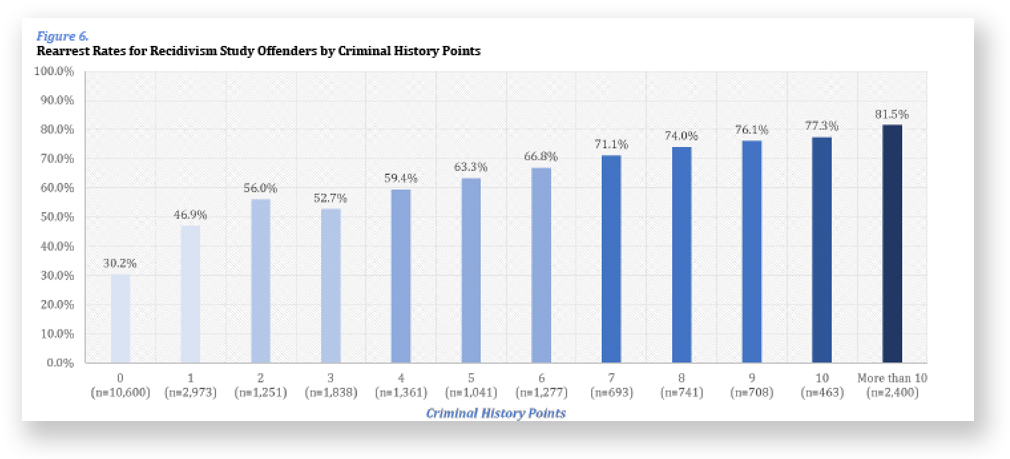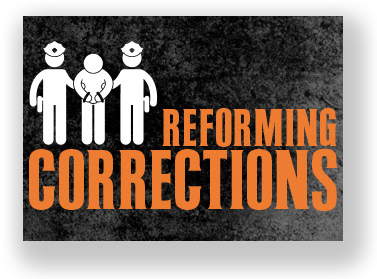Vol. 2, No. 11
This week:
Every Dog Gets One Bite
Hold the Phone
Welcome Back
Judge Gleeson’s Swan Song
Let Me Sleep on It
The Brady Bunch
Some Rumblings On Sentence Reform Legislation
EVERY DOG GETS ONE BITE
 About 20 years ago, Congress rewrote the habeas corpus laws to sharply limit prisoner access to 28 U.S.C. § 2255 motions. A central component of the change was the requirement that every prisoner gets only one § 2255 motion, unless a court of appeals authorizes a “second-and-successive” § 2255 filing.
About 20 years ago, Congress rewrote the habeas corpus laws to sharply limit prisoner access to 28 U.S.C. § 2255 motions. A central component of the change was the requirement that every prisoner gets only one § 2255 motion, unless a court of appeals authorizes a “second-and-successive” § 2255 filing.
Generally, getting permission for a second § 2255 is as rare as a snow squall in August (although if Johnson v. United States becomes retroactive, there’ll be a flurry of such motions). But federal prisoner and serial filer Sheldon Fuller thought he’d figured out a way around the second-and-successive limitation.
Sheldon filed his first § 2255 motion in 2011. It was denied. He sought a certificate of appealability from the 2nd Circuit in order to appeal. The COA was denied, too. But before the Court of Appeals acted on the COA, Sheldon filed a second § 2255 motion, arguing that it was not “second-and-successive” (and thus he did not need Court of Appeals permission to file it), because denial of his first § 2255 was not yet final.
The district court denied the second § 2255 on the merits, too. Likewise, his application for a COA was denied. But – you guessed it – before denial of the second § 2255 was final, Sheldon filed a third § 2255, claiming that it too was not second and successive because his prior § 2255 was still pending. Under Sheldon’s theory, he could keep filing new § 2255s until his release date (which, given his life sentence, was never), as long as he filed the new one before denial of the previous one was final.
Last week, the Second Circuit limited Sheldon’s dog to one bite. Holding that the Antiterrorism and Effective Death Penalty Act was intended to give every prisoner one chance for full collateral review, it ruled that because Sheldon’s first § 2255 had “reached final adjudication prior to commencement of the present proceeding, his instant § 2255 motion is successive.” The Court said the rule is that any § 2255 is successive if it “filed subsequent to the conclusion of a proceeding that counts as the first.” Interestingly, however, the Court suggested in a footnote that while Sheldon’s “second § 2255 motion was successive is not currently at issue, we note that it differed from the third § 2255 motion in that the second motion was filed before the adjudication of Fuller’s first § 2255 motion became final.”
Perhaps Sheldon’s strategy does work … once.
Fuller v. United States, Case No. 15-3006 (2nd Cir. Mar. 5, 2016)

HOLD THE PHONE
The U.S. Court of Appeals for the D.C. Circuit last week put on hold a Federal Communications Commission order capping prison phone-call rates.
The FCC voted 3-2 last fall to put a rate cap on charges for all phone calls to and from prison inmates. The order was intended to curb what the FCC called “excessive rates and egregious fees” paid by inmates – as high as $14 a minute in some jails (31 times the per-minute cost of a call to Antarctica). The FCC’s rule limits the rate for debit and prepaid calls in state or federal prisons to 11 cents a minute.
 The caps were challenged by prison phone companies and several states, which argued that the FCC had exceeded its statutory authority and had unlawfully disregarded the actual costs of providing telephone services to inmates.
The caps were challenged by prison phone companies and several states, which argued that the FCC had exceeded its statutory authority and had unlawfully disregarded the actual costs of providing telephone services to inmates.
Global Tel*Link v. FCC, Case No. 15-1461 (D.C.Cir., Mar. 7, 2016)

WELCOME BACK
 How many Federal inmates will come back to prison at some point in their lives? Ask around the table at chow some time. The answers you get will probably be at odds with reality.
How many Federal inmates will come back to prison at some point in their lives? Ask around the table at chow some time. The answers you get will probably be at odds with reality.
Last week, the U.S. Sentencing Commission issued results of a study that reported some sobering facts. Over an 8-year follow-up period, almost half of federal offenders released in 2005 (49.3%) were rearrested for a new crime or rearrested for a violation of supervision conditions. Almost a third (31.7%) of those guys were also reconvicted, and one-quarter (24.6%) of them were reincarcerated over the same study period.
 The most dangerous time for a freed inmate is the first two years after release. The Sentencing Comission said that median time from release to rearrest was 21 months.
The most dangerous time for a freed inmate is the first two years after release. The Sentencing Comission said that median time from release to rearrest was 21 months.
What’s more, all that talk about “frequent fliers” – people with impressive criminal histories who keep coming back – seems to be true. An inmate’s criminal history closely correlates with recidivism rates. Rearrest rates range from 30.2% for offenders with zero total criminal history points to 80.1% of offenders in the highest Criminal History Category. A federal prisoner’s age at time of release into the community is also closely associated with differences in recidivism rates. Offenders released prior to age 21 had the highest rearrest rate (67.6%), while offenders over 60 years old at the time of release had a recidivism rate of 16.0%.
U.S. Sentencing Commission, Recidivism Among Federal Offenders:
A Comprehensive Overview (Mar. 9, 2016)
JUDGE GLEESON’S SWAN SONG
 U.S. District Judge John Gleeson, in his final days on the Eastern District of New York bench before joining a white-shoe Wall Street law firm, last week invented a blueprint for helping people convicted of federal crimes secure jobs.
U.S. District Judge John Gleeson, in his final days on the Eastern District of New York bench before joining a white-shoe Wall Street law firm, last week invented a blueprint for helping people convicted of federal crimes secure jobs.
More than a dozen states issue certificates to ex-offenders who prove rehabilitation, usually by remaining offense-free for a long stretch. The certificates protect prospective employers and may exempt recipients from laws that bar convicted felons from obtaining occupational licenses (now required for about one out of five jobs).
There is no equivalent federal certificate, so Judge Gleeson rolled his own. In an order issued last week, the judge issued a “federal certificate of rehabilitation” to a nurse with a 13-year-old fraud conviction. The defendant – identified only as “Jane Doe” — had been shut out of nursing jobs because of her conviction for a car insurance scam. She did 15 months for it, and was released 12 years ago.

Judge Gleeson wrote, “I had no intention to sentence [Doe] to the unending hardship she has endured in the job market … Her conviction makes her no different than any other nursing applicant. In the 12 years since she reentered society after serving her prison sentence, she has not been convicted of any other wrongdoing. She has worked diligently to obtain stable employment, albeit with only intermittent success. Accordingly, I am issuing Doe a federal certificate of rehabilitation.”
The judge expunged the conviction of another defendant in the same case last year, in what legal experts said was the first instance of a federal court erasing a criminal record on the grounds that it interfered with employment. Unsurprisingly, the Justice Department is appealing his order in that case.
Doe v. United States, Case No. 15-Misc-1104 (E.D.N.Y., Mar. 7, 2016)

LET ME SLEEP ON IT
Nicholas Ragin was concerned about being charged with running a prostitution ring and dealing drugs. His lawyer, Nikita V. Mackey, however, remained calm … very calm. So calm, in fact, that he slept during the 3-week trial of Nick and his co-conspirators.
 The jury convicted Nicholas, and he got 30 years. He filed a § 2255 motion that raised eight different issues, one of which was his complaint that counsel had slept during trial. Nick’s one-paragraph aside in the § 2255 motion became the focus of an evidentiary hearing. Other defense counsel and a juror testified to counsel’s extended napping, with stories such as this one:
The jury convicted Nicholas, and he got 30 years. He filed a § 2255 motion that raised eight different issues, one of which was his complaint that counsel had slept during trial. Nick’s one-paragraph aside in the § 2255 motion became the focus of an evidentiary hearing. Other defense counsel and a juror testified to counsel’s extended napping, with stories such as this one:
Mr. Mackey was sort of sitting back, leaning back in his chair with his left elbow on his left thigh … and sort of with his chin resting on his fist, and government counsel held the document in front of him and he didn’t move, he sort of sat there. Judge Conrad leaned into his microphone, because we were all sitting there and Mackey wasn’t moving and said, ‘Mr. Mackey’ . . . very loudly. Mackey then jumped up and sort of looked around and was licking his lips and moving his mouth and looked sort of confused and looked all over the room except at government counsel. And after a few seconds, he saw government counsel standing there and looked at the document.”
Despite the testimony, the district court denied the § 2255 motion, holding that Nick had not proven that he was prejudiced by counsel’s one-man slumber party. The district judge discounted the juror’s testimony because he thought she perhaps felt “remorse” for the stiff sentence the defendant received.
 Last Friday, the 4th Circuit Court of Appeals threw out Nick’s conviction. The decision said, “We find it impossible not to conclude that Mackey was … not functioning as a lawyer during a substantial portion of the trial. Unconscious counsel equates to no counsel at all. Because we have no basis to conclude that an attorney who sleeps through a substantial portion of the trial has exercised judgment on his client’s behalf, ‘we have insufficient basis for trusting the fairness of that trial and consequently must presume prejudice.’ Therefore, the fact that Mackey was sleeping during Ragin’s trial amounted to constructive denial of counsel for substantial periods of that trial.”
Last Friday, the 4th Circuit Court of Appeals threw out Nick’s conviction. The decision said, “We find it impossible not to conclude that Mackey was … not functioning as a lawyer during a substantial portion of the trial. Unconscious counsel equates to no counsel at all. Because we have no basis to conclude that an attorney who sleeps through a substantial portion of the trial has exercised judgment on his client’s behalf, ‘we have insufficient basis for trusting the fairness of that trial and consequently must presume prejudice.’ Therefore, the fact that Mackey was sleeping during Ragin’s trial amounted to constructive denial of counsel for substantial periods of that trial.”
United States v. Ragin, Case No. 14-7245 (4th Cir. Mar. 11, 2016)
THE BRADY BUNCH
Just about everyone knows something about Brady v. Maryland, the 1963 Supreme Court decision that holds the government violates due process when it fails to disclose to the defense evidence favorable to the accused, either because the evidence is exculpatory or because it is impeaching.
 Thus, there was a flutter of excitement last week when the Supreme Court tossed a Louisiana murder conviction in a summary reversal that drew a sharp dissent from two conservative justices. The unsigned opinion held that the state court erred in upholding Michael Wearry’s conviction after it turned out that the prosecution withheld information “that could have advanced” Wearry’s defense. The opinion said that “beyond doubt, the newly revealed evidence suffices to undermine confidence in Wearry’s conviction.”
Thus, there was a flutter of excitement last week when the Supreme Court tossed a Louisiana murder conviction in a summary reversal that drew a sharp dissent from two conservative justices. The unsigned opinion held that the state court erred in upholding Michael Wearry’s conviction after it turned out that the prosecution withheld information “that could have advanced” Wearry’s defense. The opinion said that “beyond doubt, the newly revealed evidence suffices to undermine confidence in Wearry’s conviction.”
Justices Samuel Alito and Clarence Thomas, dissented, calling it “highly inappropriate” to reverse without granting certiorari so that the State of Louisiana could be heard. The majority retorted that “the Court has not shied away from summarily deciding fact-intensive cases where, as here, lower courts have egregiously misapplied settled law.”
The decision is interesting to anyone who likes seeing a blatant Brady violation, but it does not really extend or expand Brady in any meaningful way. Still, a due process win and a hot cup of coffee is a good way to start a cold spring morning.
Wearry v. Cain, Case No. 14-10008 (Supreme Court, Mar. 7, 2016)

SOME RUMBLINGS ON SENTENCE REFORM LEGISLATION
Nothing changed on the House or Senate legislative calendars last week for the Sentencing Reform and Corrections Act of 2015 (which some call “Sriracha”). The Senate bill (S. 2123) still has 28 cosponsors, while the House measure (H.R. 3713) has 59.
However, people are talking, and for a change, some of the talkers are people who are in a position to know something. Speaking at a Georgetown University Law Center conference last week, Senate Judiciary Committee Chairman Charles Grassley (R-Iowa) said “We are very close to making some changes in this bill so we can get it brought before the United States Senate.”
In January, a group led by Sen. Tom Cotton (R-Arkansas) raised concerns that Sriracha could release thousands of violent criminals early. Criminal justice reform advocates argued the bill would not guarantee the release of violent criminals, but simply let their cases get reevaluated by a federal judge.

Last Tuesday, Grassley called Cotton’s concerns “legitimate and reasonable.” While he did not provide specifics on the amendments, Grassley said legislators may have to drop parts of the bill that would have allowed Armed Career Criminal Act inmates get their sentences lowered retroactively.
Ohio State law professor Doug Berman said last week in his sentencing blog that “Senator Grassley also spoke about all the complaints he receives back in Iowa and elsewhere about leaders in DC spending all their time fighting over politics and not getting anything actually done. Senator Grassley’s comments have me now thinking that he and other GOP members of the Senate are likely to stress bipartisan work on sentencing reform when attacked by Democrats and others for ‘not doing anything …’ And work on sentencing reform will not seem all that meaningful if a bill does not come to the floor of the Senate at some point.”
The House also must pass its version of the bill, and there are reasons for concern that the House will not do so unless mens rea reform is a part of the equation. Berman said “every day that goes by without the legislative process moving forward tangibly is yet another day lost before the congressional election season gets into full swing when members of Congress start focusing more on November voting dynamics rather than whether they get anything done on a complicated policy issue that involves lots of compromises and intricacies.”
 In what could be a favorable indication of Congressional movement, the Senate last Thursday overwhelmingly passed a broad drug treatment and prevention bill, the largest of its kind since a law in 2008 that mandated insurance coverage for addiction treatment. The New York Times suggested that this legislative accomplishment could be a bipartisan model for Senate cooperation on criminal justice reform.
In what could be a favorable indication of Congressional movement, the Senate last Thursday overwhelmingly passed a broad drug treatment and prevention bill, the largest of its kind since a law in 2008 that mandated insurance coverage for addiction treatment. The New York Times suggested that this legislative accomplishment could be a bipartisan model for Senate cooperation on criminal justice reform.
 Former Congressman J.C. Watts (R – Oklahoma), chairman of the Charles Colson Task Force on Federal Corrections, wrote a spirited piece in The Hill last week attacking myths about prison reform, such as “all drug offenders are violent” and “law enforcement is opposed to Sriracha.” He concluded that “as Congress contemplates prison reform, it could take a page out of the book of state experiences … There, public officials on both sides of the aisle came together to develop better models, informed by evidence and data, that could reduce prison overcrowding, conserve resources, and enhance public safety. These reform efforts demonstrate that it is indeed possible to promote public safety while being fiscally responsible, creating a more equitable and effective criminal justice system.”
Former Congressman J.C. Watts (R – Oklahoma), chairman of the Charles Colson Task Force on Federal Corrections, wrote a spirited piece in The Hill last week attacking myths about prison reform, such as “all drug offenders are violent” and “law enforcement is opposed to Sriracha.” He concluded that “as Congress contemplates prison reform, it could take a page out of the book of state experiences … There, public officials on both sides of the aisle came together to develop better models, informed by evidence and data, that could reduce prison overcrowding, conserve resources, and enhance public safety. These reform efforts demonstrate that it is indeed possible to promote public safety while being fiscally responsible, creating a more equitable and effective criminal justice system.”
Legal Information Services Associates provides research and drafting services to lawyers and inmates. With over 20 years experience in post-conviction motions and sentence modification strategy, we provide services on everything from direct appeals to habeas corpus to sentence reduction motions to halfway house and home confinement placement. If we can help you, we’ll tell you that. If what you want to do is futile, we’ll tell you that, too.
If you have a question, contact us using our handy contact page. We don’t charge for initial consultation.
Would you like a copy of this newsletter in PDF format? Click here.


